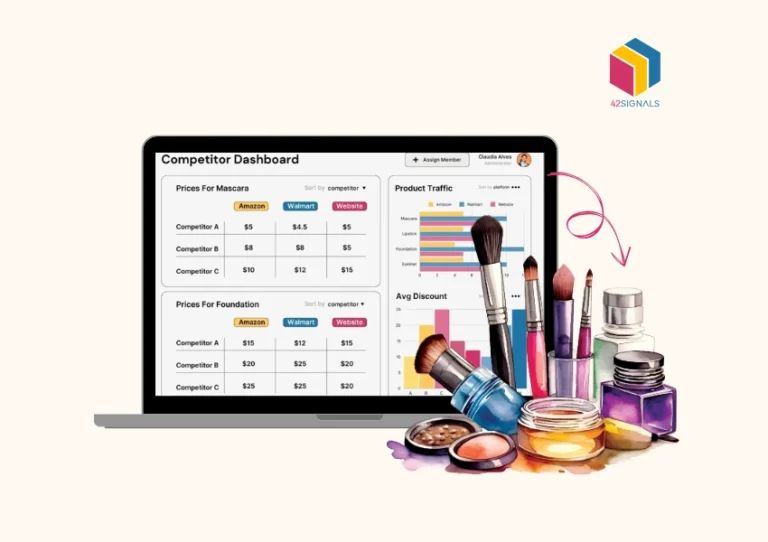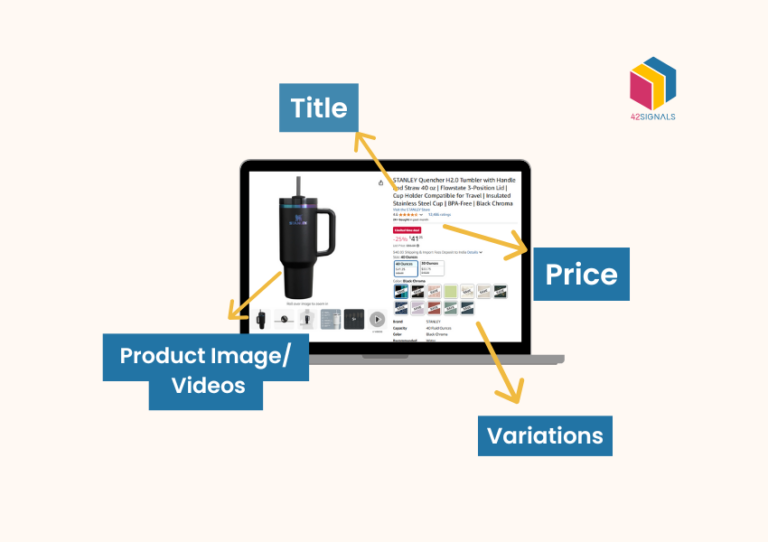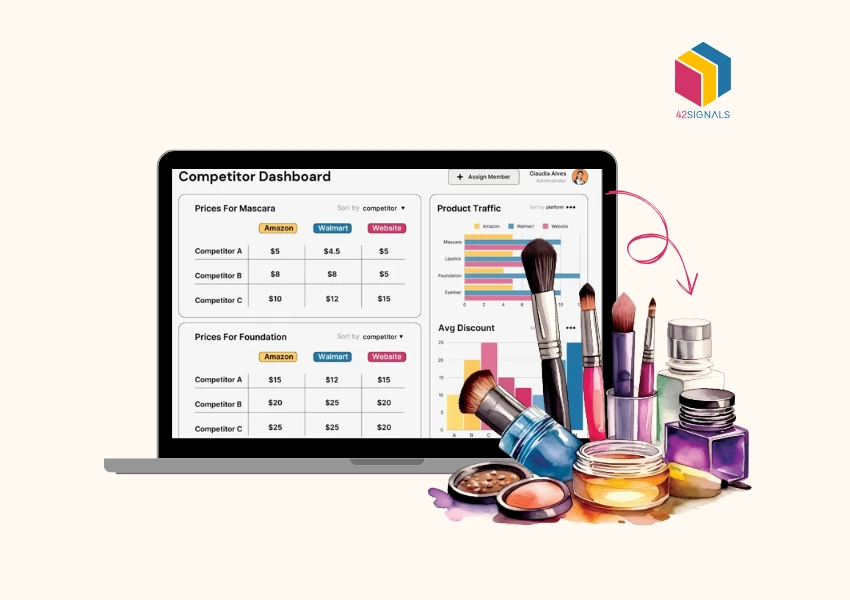The growth of the ecommerce industry has been exponential in recent years, with retail and ecommerce sales projected to exceed 6 trillion US dollars this year, up from 5.7 trillion US dollars in 2022. The convenience of online shopping has propelled digital-first brands to the forefront of the industry, while traditional brick-and-mortar businesses are also transitioning online to enhance their retail capabilities.
Using Data in Retail and ECommerce
Undoubtedly, online shopping had risen in prominence in recent years but the pandemic in 2020 has further accelerated this shift, as consumers turned to online shopping as a safer – in some cases, the only alternative. Forbes has conducted pros vs. cons analysis, highlighting the advantages of online shopping when done correctly.

The emergence of platforms such as Amazon and Flipkart has disrupted the traditional retail industry by offering easily accessible products online. This has created an extremely competitive landscape and while these giants continue to dominate the market, other ecommerce platforms have since arisen such as Snapdeal, Paytm, and Myntra, and are gaining momentum. With younger generations increasingly relying on online shopping, ecommerce businesses have access to a massive audience to market their products and build a loyal customer base.
Diving deeper into the subject, let’s take a closer look at how modern commerce is transforming the digital landscape of the Indian retail and ecommerce industry.
Impact of Ecommerce on the Indian Retail and Ecommerce Industry
A report by the IBEF (Indian Brand Equity Foundation) projects that the ecommerce market in India will grow to touch 200 billion US dollars by 2026. This explosive ecommerce growth in the country can be attributed to several factors –
• The growing middle-class segment
The expanding middle-class segment in India has been a pivotal factor in transforming the retail and ecommerce industries. With a better income, people’s standard of living has improved, enabling them to afford previously unattainable items. This creates a new target audience for brands and international companies to reach and promote their products to.
• Enhanced internet accessibility
The proliferation of 4G networks and initiatives by companies such as Jio have enabled people from all corners of the country to access the Internet. This connection to ecommerce platforms from remote areas has increased online shopping and boosted the industry.
• Rapid proliferation of mobile devices
Complementing the first two points, the surge in affordable smartphone devices has significantly impacted people’s ability to shop online on a comfortable interface. With brands like Redmi and Xiaomi producing high-end smartphones at affordable prices, more and more people can own phones for the first time and access the internet.

Source: Dazeinfo
These factors have played a crucial role in how ecommerce in India has grown over the years and its impact on the market. The below infographic by TeamLease shows the evolution and expansion of India’s retail industry since the pre-1990s.
Let’s look at the other areas that underwent transformation and benefited the retail and ecommerce industry in India.
Increased competition in Retail and ECommerce
The Indian retail industry is facing increased competition due to the rise of several digital-first businesses. This competition forces traditional offline stores to compete with online retailers offering greater convenience, a wider range of products, and competitive pricing.
To remain relevant and increase their market share, brands are being forced to adopt new strategies such as offering personalized services, improving the online user experience, and enhancing the overall customer experience. Ecommerce platforms are constantly evolving to keep up with changing customer demands and preferences. As a result, brick-and-mortar stores are now adopting digital solutions to improve their operations and offer their customers a more seamless shopping experience.
Expansion of consumer base
With the rise of retail and ecommerce, any person in any corner of the country is now a potential customer.
This has been made possible for several reasons. Ecommerce businesses can now easily reach a wider audience, especially those concentrated in Tier 2 and Tier 3 cities resulting in increased competition among ecommerce retailers and a price war that benefits the consumers.
With the Indian government’s initiatives like ONDC and steps taken to reduce logistical challenges in delivery and warehousing, remote regions are no longer inaccessible.
Boost to small and medium-sized businesses
Ecommerce has also given a boost to small and medium-sized businesses in India. Many smaller retailers who could not afford to set up their own physical stores can now sell their products online without needing a physical storefront.
This has made it easier for these businesses to reach a larger audience, expand their customer base, and compete with larger players in the industry.
Changes in consumer behavior and expectations
Retail and ecommerce have brought about significant changes in consumer behavior and expectations in India. Today’s consumers expect a seamless shopping experience that is personalized to their tastes and hassle-free end-to-end.
This also means quick delivery times, easy returns & exchanges, a variety of payment options, and adept customer service when things go wrong. Retailers must take note of these changing requirements to appeal to their audiences and continue driving business.
This means staying up to date with the latest studies, developments, and analytic tools that uplift the shopping experience.
The Role of Technology in Driving Retail and Ecommerce Growth in India
Technology has played a crucial role in driving the growth of retail and ecommerce in India.
From optimizing the supply chain to improving the online presence, technology, and emerging software continue to alter the ecommerce marketplace. For example, many businesses use ecommerce analytics tools to understand the behavior of their customers, their product likes and dislikes, and the success and failures of competitors to offer a superior product at a competitive price.
AI and machine learning algorithms are also incorporated to offer personalized recommendations while chatbots and virtual assistants provide 24/7 customer support, so the customer is happy throughout the shopping and post-purchase process.
Conclusion
The Indian retail and ecommerce space has undergone significant transformations, propelled by factors such as emerging technologies, automation, and artificial intelligence. These transformations have created opportunities for small and medium-sized businesses (SMBs) to compete with larger retailers, thus creating a level playing field.
This has led to a wave of entrepreneurship and startup culture, empowering more people to bring their ideas to life and drive change. The industry will only continue to evolve, and ecommerce analytics for competitor research, brand reputation monitoring, and customer sentiment analysis will become increasingly important tools for businesses looking to increase their market share.







